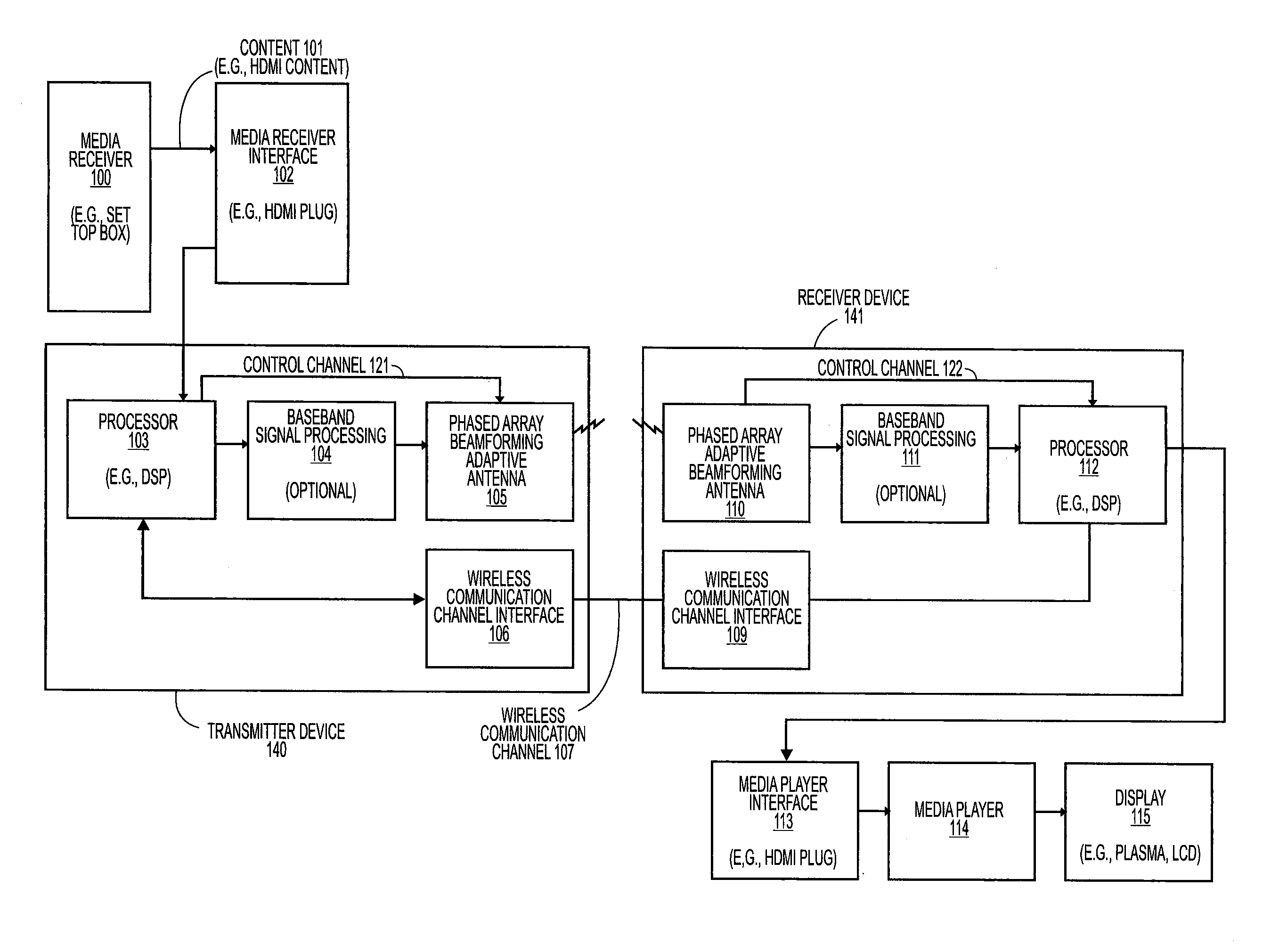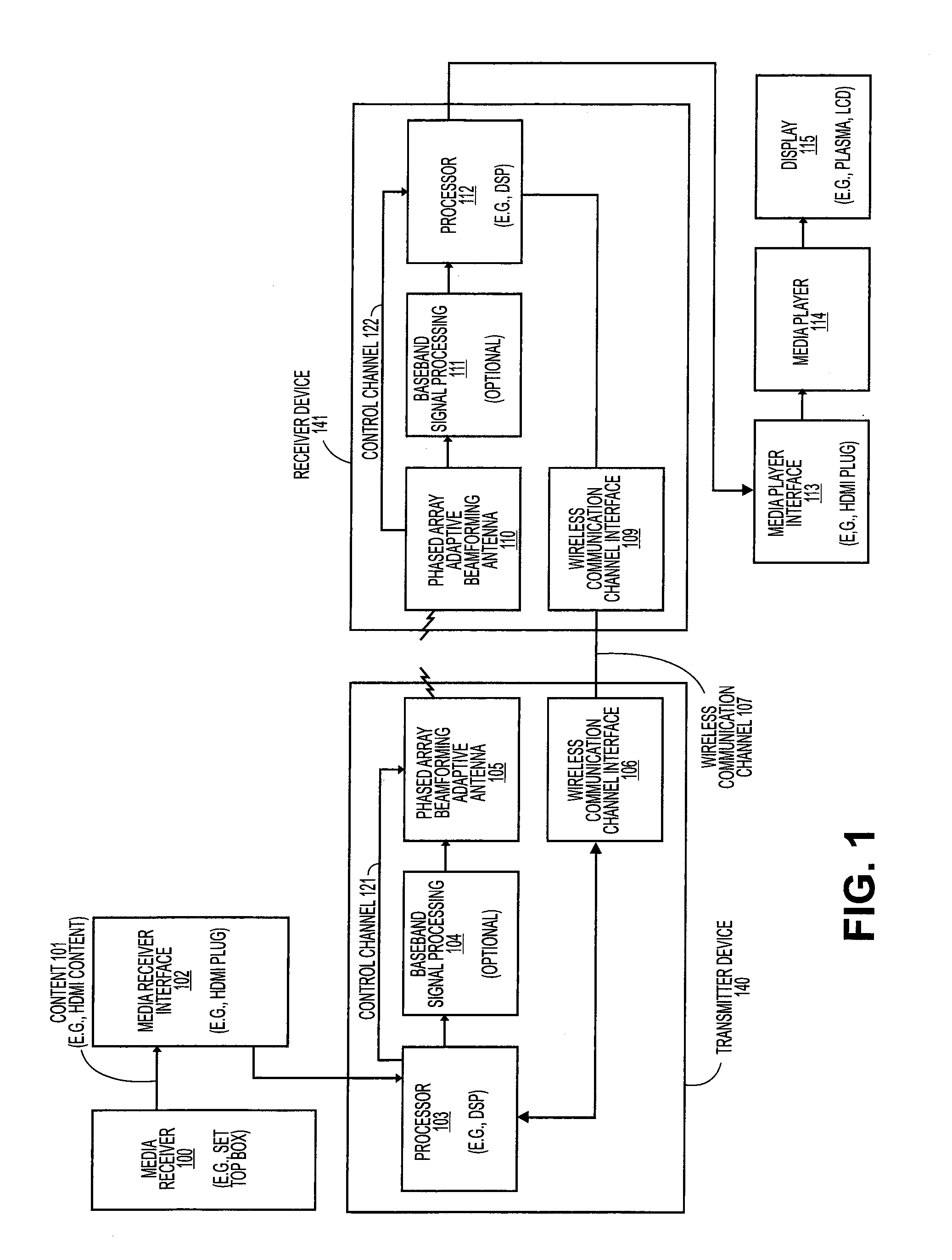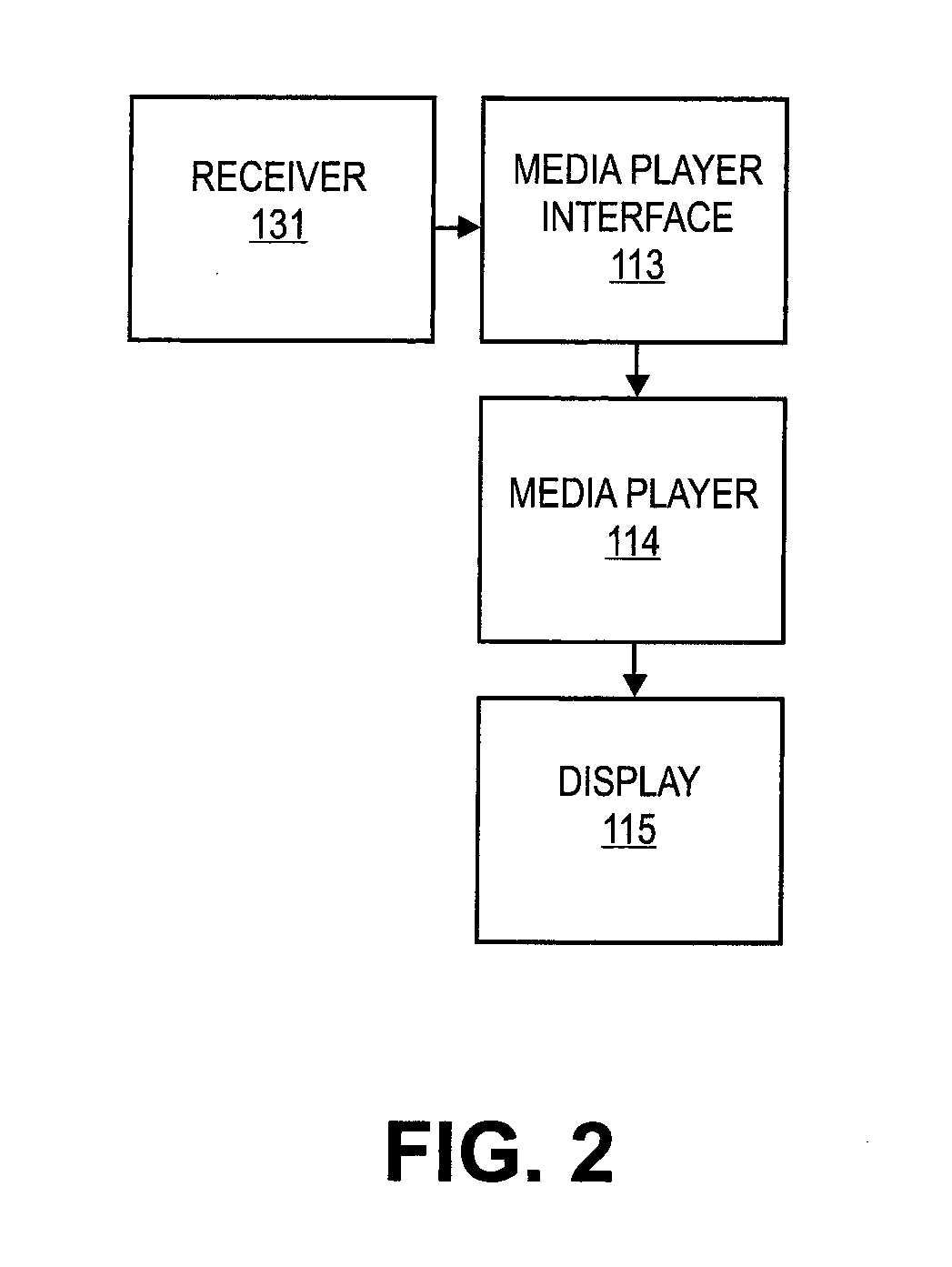Adaptive beam-steering methods to maximize wireless link budget and reduce delay-spread using multiple transmit and receive antennas
a beam-steering and wireless link technology, applied in the direction of antennas, electromagnetic wave modulation, diversity/multi-antenna systems, etc., can solve the problems of link capacity, link budget, and system complexity, and existing implementations require complex systems
- Summary
- Abstract
- Description
- Claims
- Application Information
AI Technical Summary
Benefits of technology
Problems solved by technology
Method used
Image
Examples
Embodiment Construction
[0021]An efficient and adaptive technique to perform beam-forming for time-varying propagation channels with reduced, and potentially minimum, complexity and increased, and potentially maximum, gain. As opposed to existing solutions, beam-forming is performed without directly performing Singular-Value Decomposition (SVD), which is very complex to implement. Instead the optimum channel eigenvector, or subspace, is obtained via an adaptive iterative scheme.
[0022]A secondary effect of beam-forming is that the resulting beam-formed channel would normally have shorter delay-spread, meaning that the Inter-Symbol Interference (ISI) window will also be shorter.
[0023]In the following description, numerous details are set forth to provide a more thorough explanation of the present invention. It will be apparent, however, to one skilled in the art, that the present invention may be practiced without these specific details. In other instances, well-known structures and devices are shown in bloc...
PUM
 Login to View More
Login to View More Abstract
Description
Claims
Application Information
 Login to View More
Login to View More - R&D
- Intellectual Property
- Life Sciences
- Materials
- Tech Scout
- Unparalleled Data Quality
- Higher Quality Content
- 60% Fewer Hallucinations
Browse by: Latest US Patents, China's latest patents, Technical Efficacy Thesaurus, Application Domain, Technology Topic, Popular Technical Reports.
© 2025 PatSnap. All rights reserved.Legal|Privacy policy|Modern Slavery Act Transparency Statement|Sitemap|About US| Contact US: help@patsnap.com



